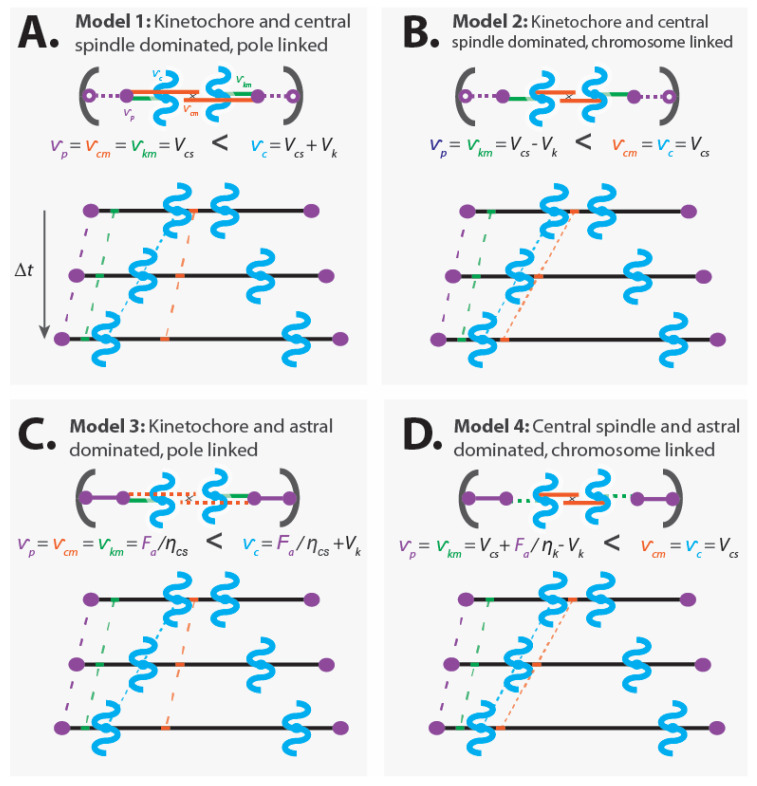Figure 5.
(A) In Model 1, the central spindle microtubules slide apart at their preferred speed, , the kinetochore causes the kinetochore microtubules and chromatids to move relative to each other at its preferred speed, , and the central spindle microtubules are rigidly attached to the spindle poles. In this model, the speed that chromosomes move, , is faster than the speed that central spindle microtubules move, (which is equal to the speed of spindle poles, , and kinetochore microtubules, ). (B) In Model 2, the central spindle microtubules slide apart at their preferred speed, the kinetochore causes the kinetochore microtubules and chromatids to move relative to each other at its preferred speed, and the central spindle microtubules are rigidly attached to the chromatids. In this model, chromosomes move at the same speed as central spindle microtubules. (C) In Model 3, the astral region generates substantial forces, , that pull the spindles poles apart with speed (where is a measure of the strength of frictional forces between central spindle microtubules), and the central spindle microtubules are rigidly attached to the pole and passively respond to the forces acting on them. The kinetochore causes the kinetochore microtubules and chromatids to move relative to each other at its preferred speed. In this model, chromosomes move faster than the central spindle microtubules. (D) In Model 4, the astral region generates substantial forces that are sufficient to perturb the dynamics of the kinetochore (where is a measure of the strength of kinetochore force generation), while the central spindle microtubules slide apart at their preferred speed. The central spindle microtubules are rigidly attached to the chromatids. In this model, chromosomes move at the same speed as the central spindle microtubules.

